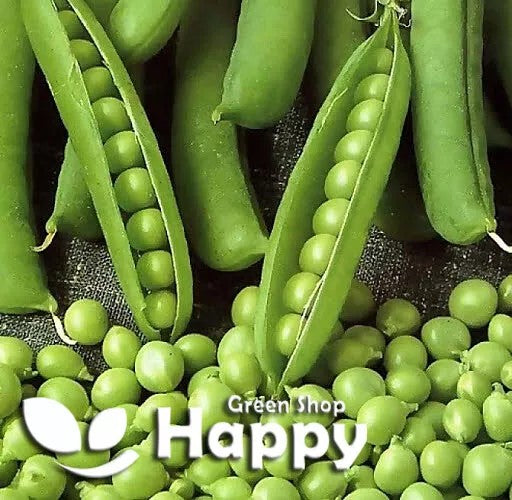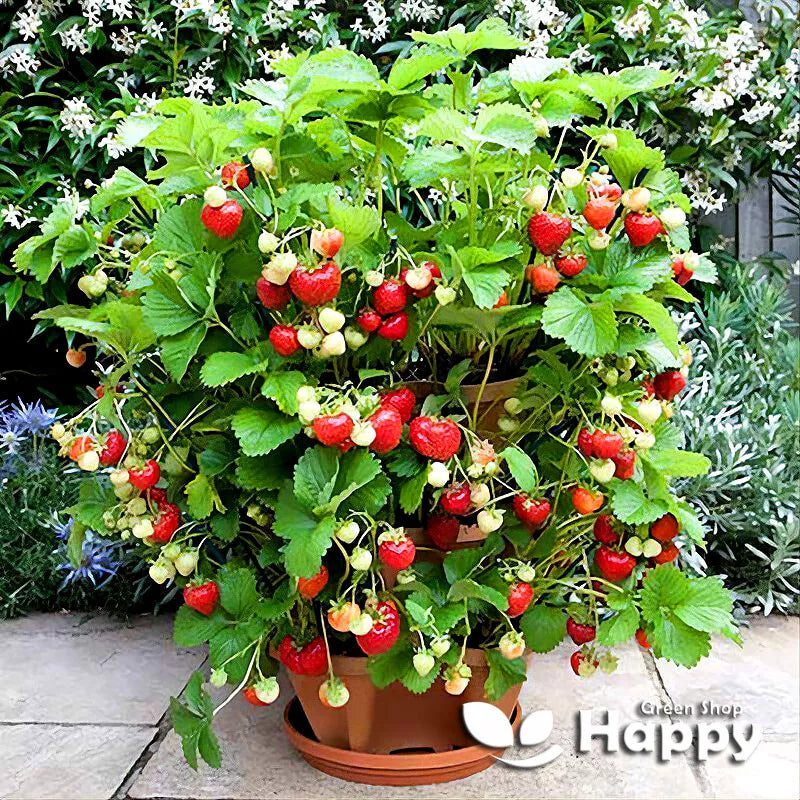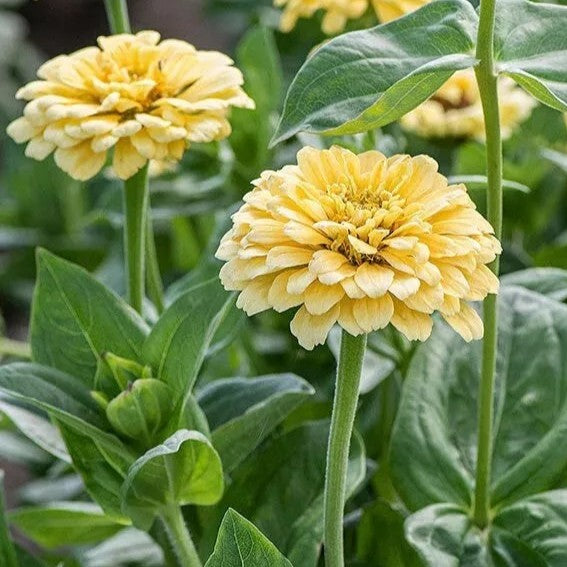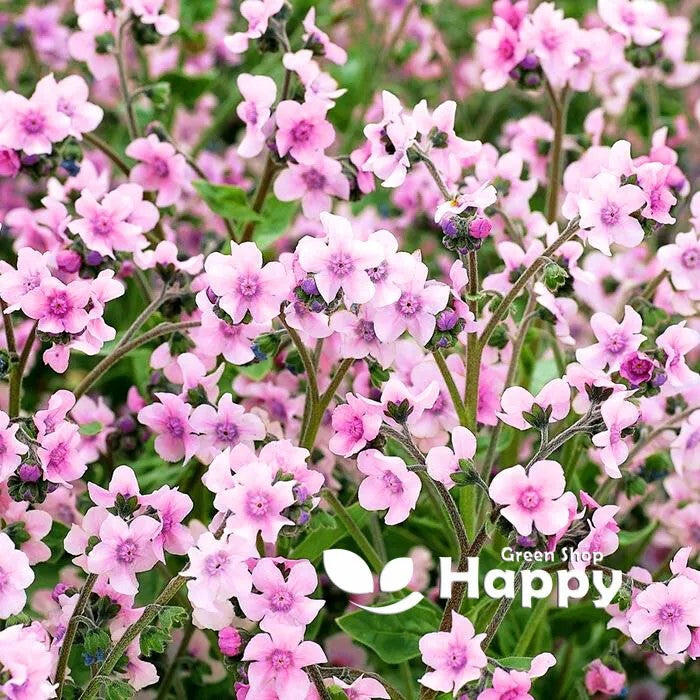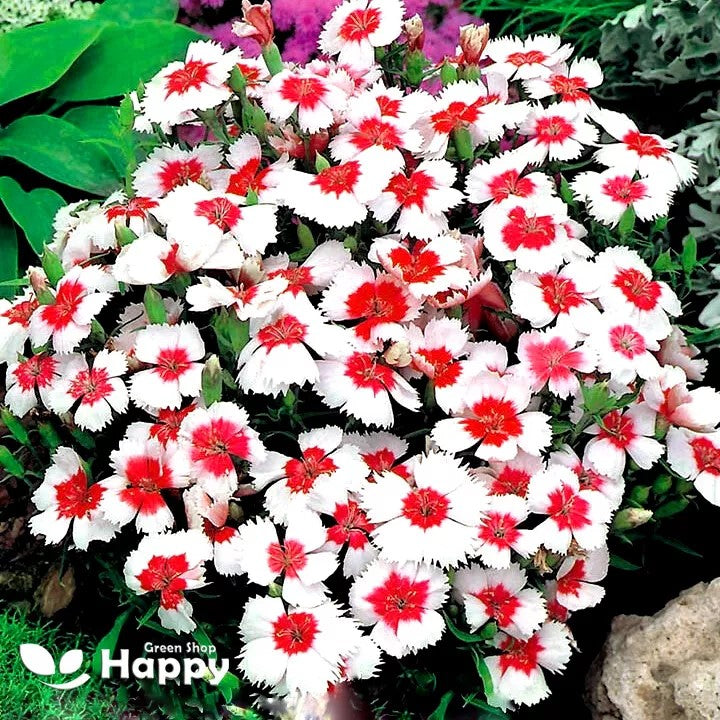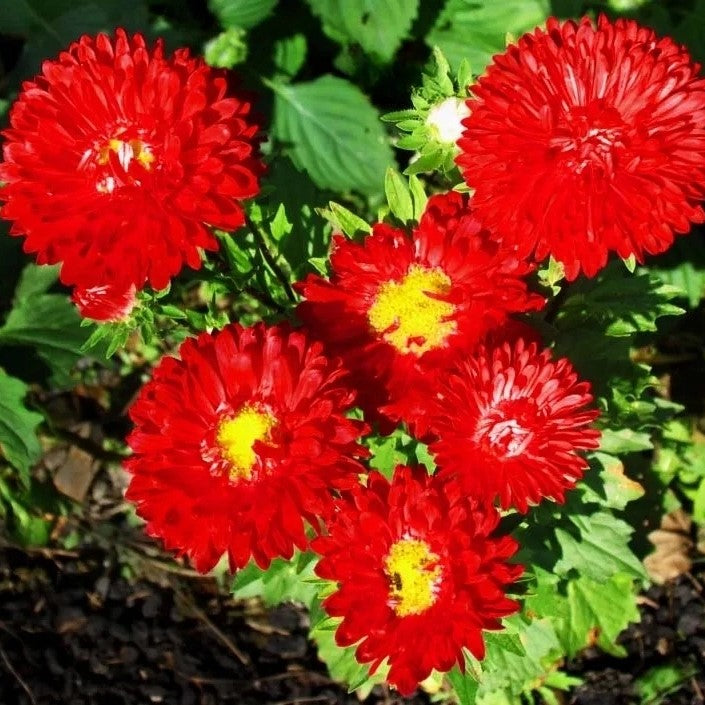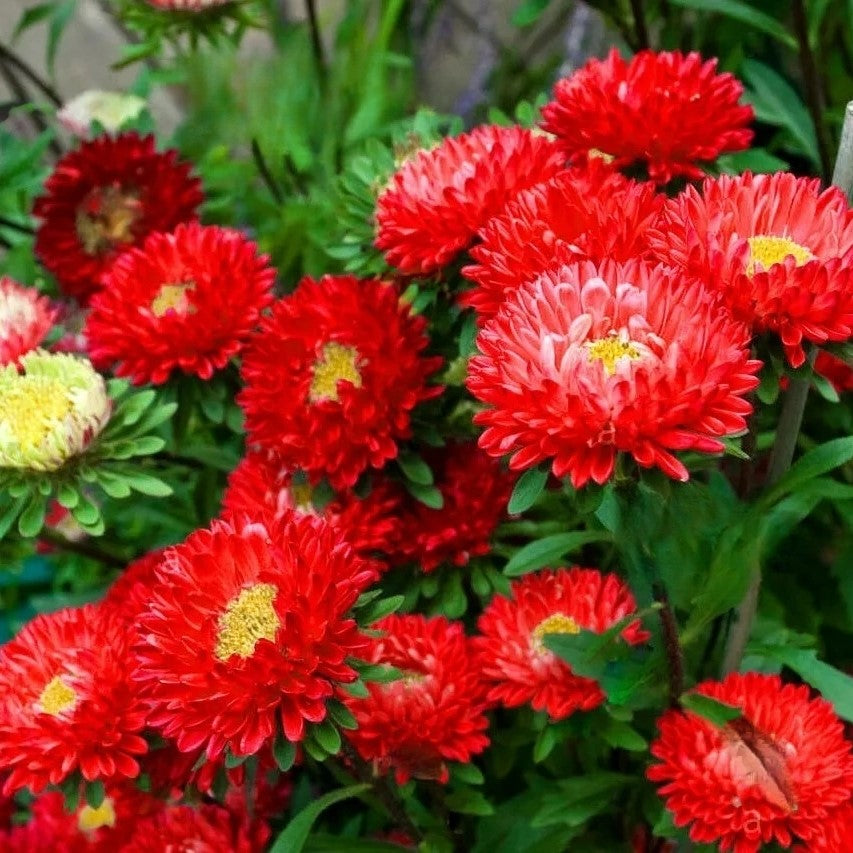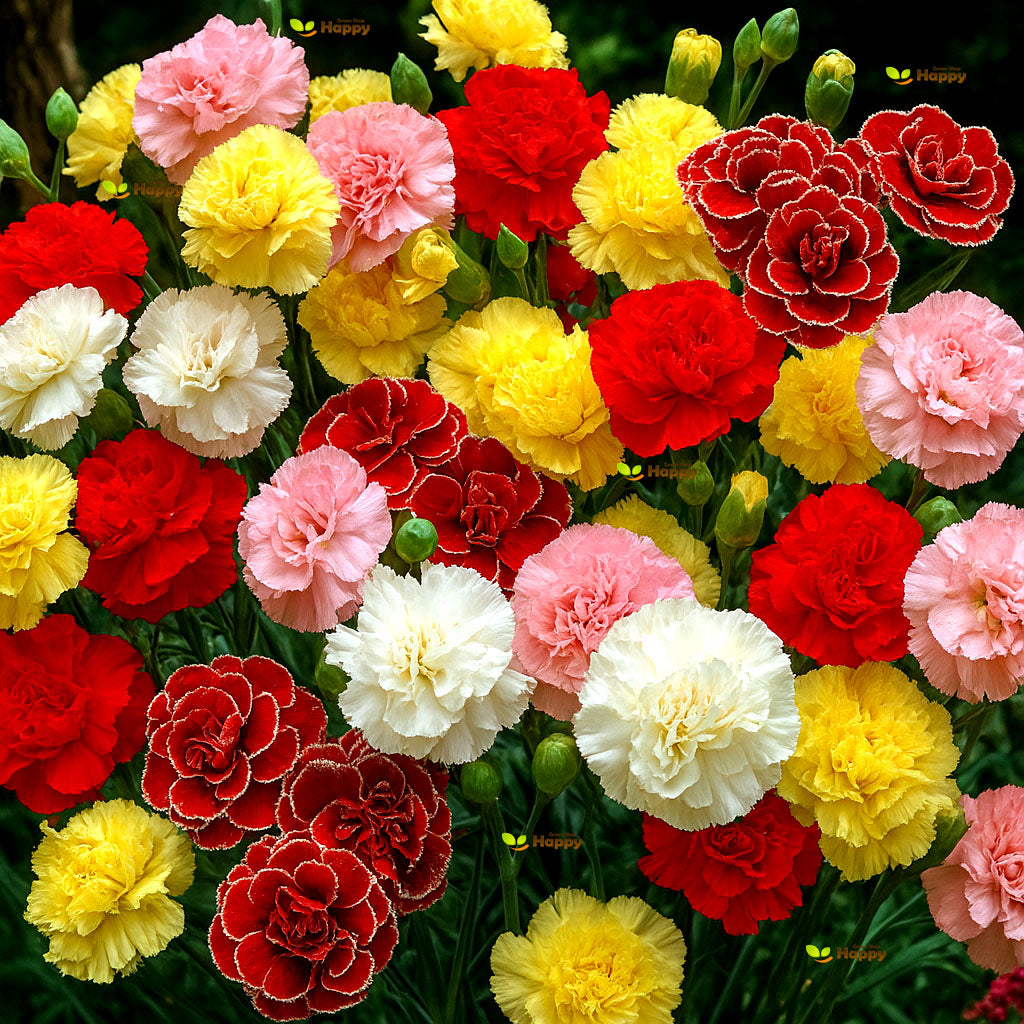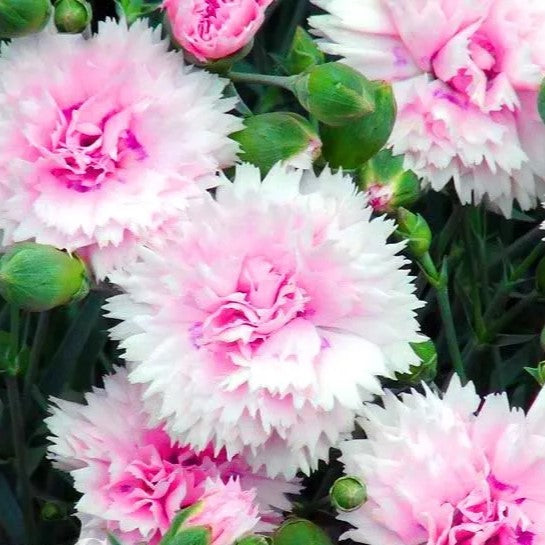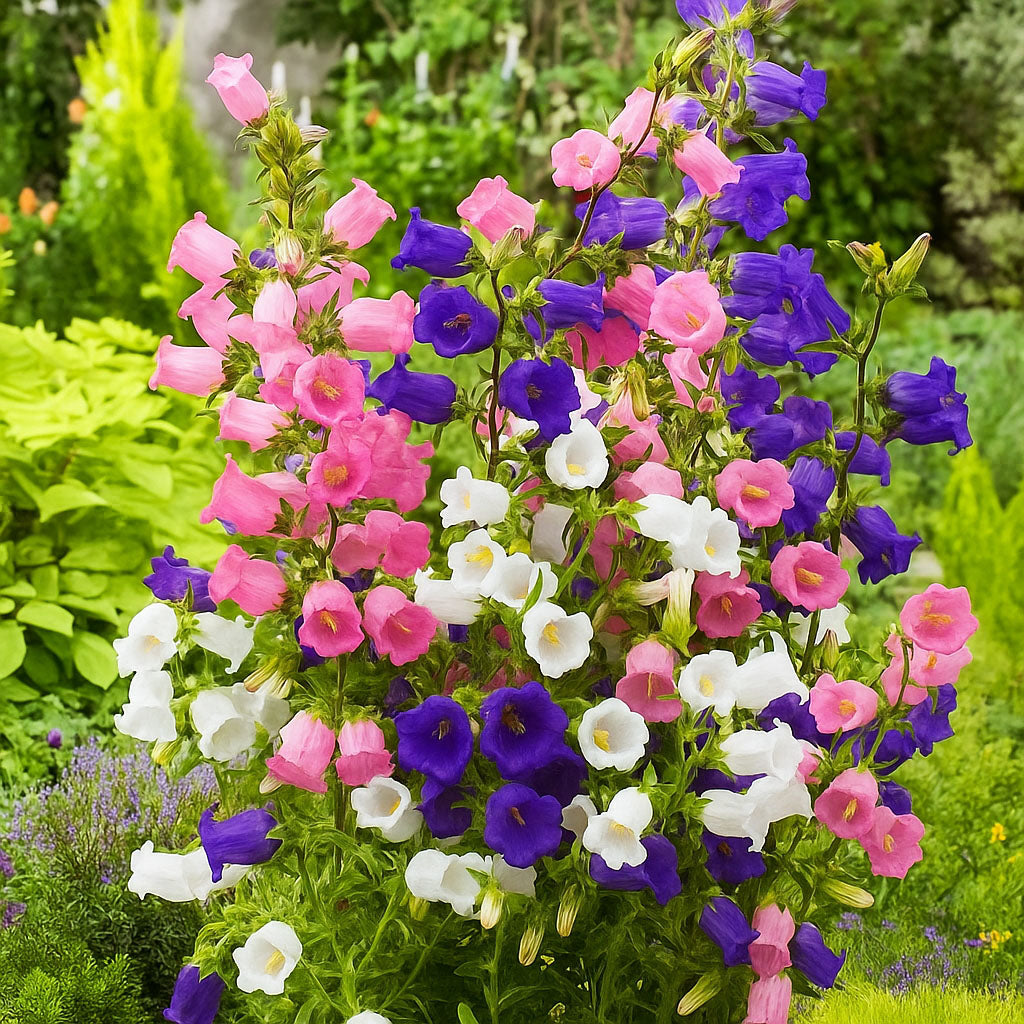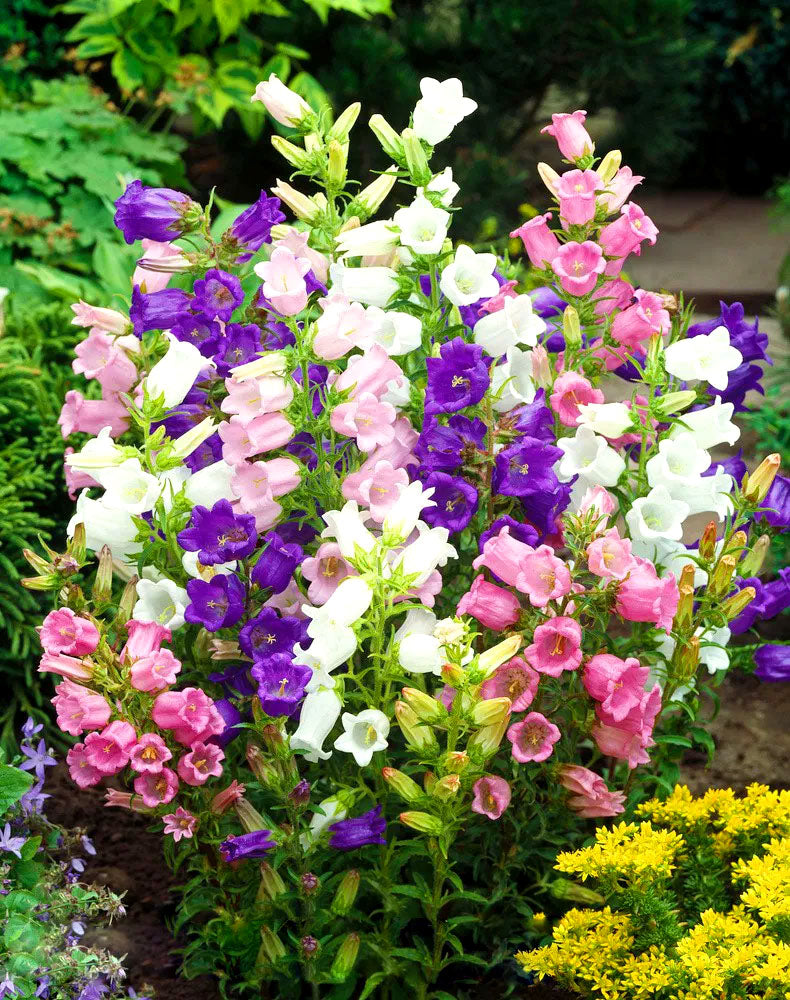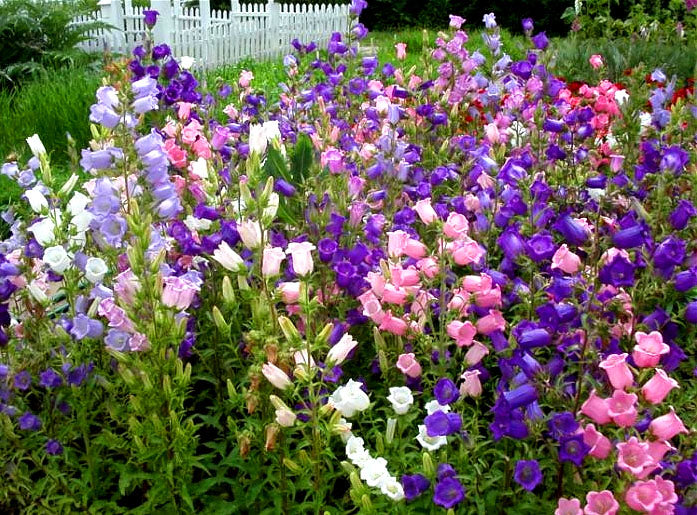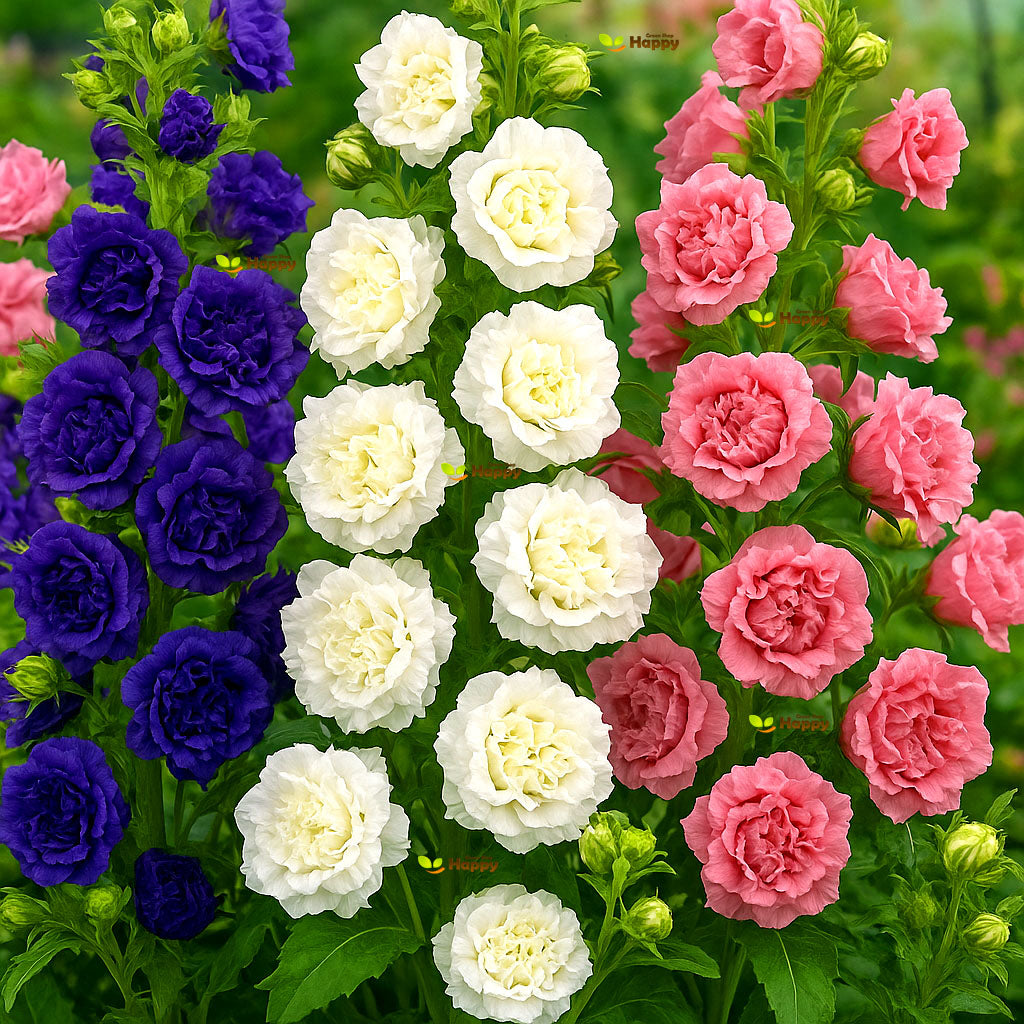Sort by:
326 products
326 products
Chinese Forget-Me-Not 'Mystic' Pink – Seeds (Cynoglossum amabile)
A soft and romantic twist on a classic cottage flower, Chinese Forget-Me-Not 'Mystic' Pink produces delicate clusters of pink blooms that bring charm to beds, borders, and cut flower arrangements. Long-flowering and easy to grow, it’s a pollinator-friendly addition that adds elegance to any garden.
Why Grow 'Mystic' Pink
-
Unique pink color rarely found in forget-me-nots
-
Attracts bees, butterflies & other pollinators
-
Ideal for cut flowers with a soft pastel tone
-
Low-maintenance, blooms over a long period
Key Features
-
Type: Hardy annual
-
Height: 40–50 cm
-
Flowering: June–September
-
Position: Full sun or partial shade
-
Uses: Borders, cottage gardens, wildflower plantings, cutting
Ideal For
-
Cottage gardens & wildflower meadows
-
Cut flower bouquets
-
Pollinator-friendly plantings
-
Soft color themes and romantic borders
Sowing & Growing
-
Sow outdoors: April–May, directly into prepared soil
-
Thin seedlings to 20 cm apart
-
Germination: 14–21 days
-
Water regularly until established
-
Flowers first year
China Pink 'Merry-go-round' – Seeds
(Dianthus chinensis)
China Pink 'Merry-go-round' is a charming annual featuring vibrant, frilled blooms in shades of pink with delicate markings. Its compact, bushy habit makes it perfect for borders, rockeries, and containers, providing continuous colour throughout the summer. Easy to grow and low-maintenance, this variety also attracts pollinators, adding life and beauty to any garden.
Key Features
-
Type: Hardy annual
-
Height: 20–30 cm
-
Spread: 20–25 cm
-
Flowering: June–September
-
Position: Full sun
-
Soil: Well-drained, fertile soil
Ideal For
-
Borders and edging
-
Rockeries and container planting
-
Pollinator-friendly gardens
-
Summer floral displays
Sowing & Growing
-
Sow indoors: February–April at 18–22°C
-
Sow outdoors: April–May directly in soil
-
Germination: 7–14 days
-
Thin seedlings or transplant to 20–25 cm spacing
-
Deadhead regularly to prolong flowering
China Aster Tall Pompon Rubens Mix – Seeds (Callistephus chinensis)
Description:
Add vibrant color and texture to your garden with China Aster Tall Pompon Rubens Mix (Callistephus chinensis). This annual produces tall, sturdy stems adorned with dense, pompon-shaped flowers in shades of red, pink, purple, and white. Ideal for borders, cottage gardens, and cutting for bouquets, these asters provide long-lasting blooms throughout late summer to autumn. Easy to grow, they bring classic elegance to any garden setting.
Key Features
-
Tall-growing annual with pompon-shaped flowers
-
Colorful mix: red, pink, purple, and white blooms
-
Long-lasting flowers from late summer to autumn
-
Excellent for cutting and floral arrangements
-
Easy to grow and maintain
Ideal For
-
Cottage and mixed flower gardens
-
Borders and bedding displays
-
Cut flower bouquets and arrangements
-
Pollinator-friendly plantings
Sowing & Growing
-
Sow Indoors: February–April
-
Transplant Outdoors: May, after frost
-
Germination: 10–14 days at 18–22°C
-
Height: 60–90 cm
-
Spacing: 30–35 cm apart
-
Light: Full sun
-
Soil: Fertile, well-drained
Care Tips
-
Water moderately and consistently
-
Deadhead to prolong flowering
-
Support tall stems if necessary
-
Feed with a balanced fertilizer every 2–3 weeks
China Aster Scarlet – 400 Seeds (Callistephus chinensis)
Description:
Bring vibrant color and classic elegance to your garden with China Aster Scarlet (Callistephus chinensis). This annual produces tall, sturdy stems adorned with dense, scarlet-colored flowers throughout late summer and autumn. Ideal for borders, cottage gardens, and cutting gardens, these asters provide long-lasting blooms and attract pollinators. Easy to grow from seed, they add striking beauty to any garden setting.
Key Features
-
Tall-growing annual with dense scarlet flowers
-
Long-lasting blooms from late summer to autumn
-
Excellent for cutting and floral arrangements
-
Attracts bees, butterflies, and other pollinators
-
Easy to grow and maintain
Ideal For
-
Borders and mixed flower beds
-
Cottage and cutting gardens
-
Pollinator-friendly plantings
-
Vibrant seasonal color displays
Sowing & Growing
-
Sow Indoors: February–April
-
Transplant Outdoors: May, after frost
-
Germination: 10–14 days at 18–22°C
-
Height: 60–90 cm
-
Spacing: 30–35 cm apart
-
Light: Full sun
-
Soil: Fertile, well-drained
Care Tips
-
Water moderately and consistently
-
Deadhead to prolong flowering
-
Support tall stems if necessary
-
Feed every 2–3 weeks with balanced fertilizer
Carnation Chadbaud ‘Benigna’ – 100 Seeds (Dianthus caryophyllus)
Carnation Chadbaud ‘Benigna’ (Dianthus caryophyllus) is a beautiful, compact annual with soft pink, fragrant blooms. Perfect for borders, rockeries, and containers, it adds elegance and color to your garden from late spring to autumn. Easy to grow and long-flowering, it also attracts pollinators.
Why Grow "Benigna"
-
Fragrant soft pink blooms
-
Compact, bushy growth habit
-
Long flowering period from late spring to autumn
-
Attracts bees and butterflies
Key Features
-
Type: Annual (Dianthus caryophyllus)
-
Height: 20–30 cm
-
Flowering: May–October
-
Position: Full sun to partial shade
-
Uses: Borders, rockeries, containers, patios, cottage gardens
Ideal For
-
Small garden beds and borders
-
Rockeries and container planting
-
Patio displays and window boxes
-
Pollinator-friendly gardens
Sowing & Growing
-
Sow indoors: February–April in seed trays
-
Sow outdoors: April–May after frost
-
Germination: 10–20 days at 18–22°C
-
Thin seedlings to 15–20 cm apart
-
Prefers full sun and well-drained soil
-
Deadhead to encourage prolonged flowering
Carnation ‘Vienna’ – 200 Seeds (Dwarf Vienna, Dianthus caryophyllus)
Carnation ‘Vienna’ (Dianthus caryophyllus Dwarf Vienna) is a charming annual producing compact, fragrant blooms in delicate pastel shades. Its dwarf, bushy habit makes it ideal for borders, rockeries, containers, and patios. Long-flowering and easy to grow, it adds elegance and fragrance to any garden while attracting pollinators.
Why Grow "Vienna"
-
Compact, bushy habit perfect for small spaces
-
Fragrant, delicate pastel-colored blooms
-
Long-lasting flowering from late spring to autumn
-
Attracts bees and butterflies
Key Features
-
Type: Annual (Dianthus caryophyllus, Dwarf Vienna)
-
Height: 20–30 cm
-
Flowering: May–October
-
Position: Full sun to partial shade
-
Uses: Borders, rockeries, containers, patios, cottage gardens
Ideal For
-
Small garden beds and borders
-
Rockeries and container planting
-
Patio displays and window boxes
-
Pollinator-friendly gardens
Sowing & Growing
-
Sow indoors: February–April in seed trays
-
Sow outdoors: April–May after frost
-
Germination: 10–20 days at 18–22°C
-
Thin seedlings to 15–20 cm apart
-
Prefers full sun and well-drained soil
-
Deadhead to encourage prolonged flowering
Carnation ‘Sonata’ Mix Seeds (Dianthus plumarius)
A fragrant and colorful perennial, Carnation ‘Sonata’ Mix produces elegant, double blooms in shades of pink, red, and white. Compact and hardy, it’s perfect for borders, rock gardens, and containers, offering long-lasting color and sweet fragrance from late spring through summer.
What Makes It Special
-
Fragrant, double blooms in a mix of pink, red, and white
-
Compact, hardy, and ideal for borders, rock gardens, and containers
-
Long flowering season with vibrant, eye-catching colors
Key Features
-
Botanical name: Dianthus plumarius
-
Hardy perennial
-
Height: 15–20 cm (6–8 in)
-
Bloom time: Late spring to summer
Ideal For
-
Borders, rock gardens, and container plantings
-
Fragrant and colorful garden displays
-
Edging and small garden spaces
Sowing
-
Sow indoors Feb–Apr or outdoors Mar–May
-
Cover lightly with soil and keep moist
-
Germination: 14–21 days at 15–20°C
-
Thin seedlings 15–20 cm apart
-
Flowers in the first or second season after sowing
Canterbury Bells Mix Seeds (Campanula medium)
Canterbury Bells are classic biennial flowers cherished for their bell-shaped blooms in a range of vibrant colors. This mix produces tall, elegant stems covered in large, showy flowers that brighten borders, cottage gardens, and cut flower arrangements. With their long-lasting blooms and architectural form, they are perfect for adding vertical interest and charm to any garden.
What Makes It Special
-
Produces bell-shaped flowers in multiple colors
-
Tall, upright growth adds vertical structure to borders
-
Excellent for cut flowers with a long vase life
-
Biennial: flowers in the second year for a reliable display
Key Features
-
Botanical name: Campanula medium
-
Common name: Canterbury Bells
-
Seed count: Approx. seeds per pack
-
Height/Spread: 60–90 cm tall, 25–30 cm spread
-
Position: Full sun to partial shade, well-drained soil
-
Flowering period: Second year; early to mid-summer
-
Lifespan: Biennial
Ideal For
-
Borders and cottage-style gardens
-
Cut flower arrangements
-
Mixed flower beds
-
Pollinator-friendly gardens
Sowing Instructions
-
When to sow:
-
Indoors: February–March for transplanting
-
Outdoors: April–May in well-prepared soil
-
-
How to sow:
-
Sow seeds thinly on surface and lightly press into soil
-
Keep soil moist until germination (10–20 days)
-
-
Transplant/Thin: Space seedlings 25–30 cm apart
-
Care: Protect young plants from frost; stake taller varieties if needed
Canterbury Bells Double Mix – Seeds
(Campanula medium)
Canterbury Bells ‘Double Mix’ is a traditional cottage garden favorite, producing tall spires filled with large, fully double bell-shaped blooms. This colorful mix features shades of blue, pink, white, and lavender, bringing old-fashioned charm and elegance to borders, beds, and cutting gardens.
Why Grow Canterbury Bells Double Mix?
-
Stunning double blooms in soft pastel shades
-
Classic cottage garden plant with tall spires
-
Long-lasting cut flowers for arrangements
-
Reliable biennial, flowering the following year
Key Features
-
Type: Biennial
-
Height: 60–90 cm
-
Flowers: Early to mid-summer (second year)
-
Position: Full sun to partial shade
-
Soil: Well-drained, fertile soil
Ideal For
-
Cottage and traditional gardens
-
Flower borders and background planting
-
Cut flower arrangements
-
Pollinator-friendly spaces
Sowing & Growing
-
Sow indoors: May–July in trays of fine compost (do not cover seeds – light aids germination)
-
Germination: 14–21 days at 18–22°C
-
Transplant: Prick out seedlings and grow on before planting out in autumn
-
Care: Water regularly, deadhead faded blooms, and stake taller plants if needed
Showing 270/326

